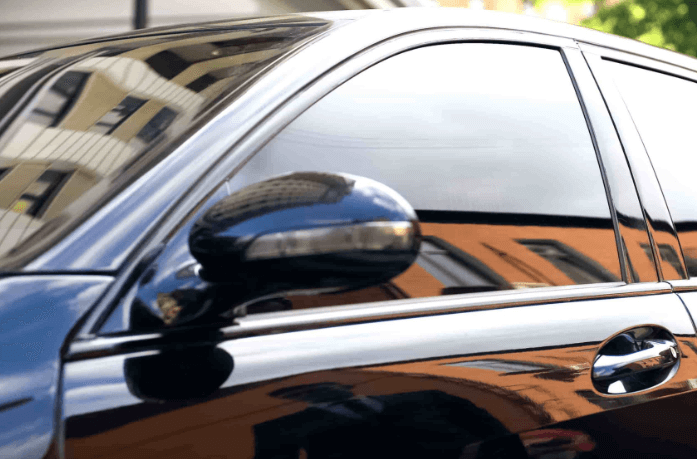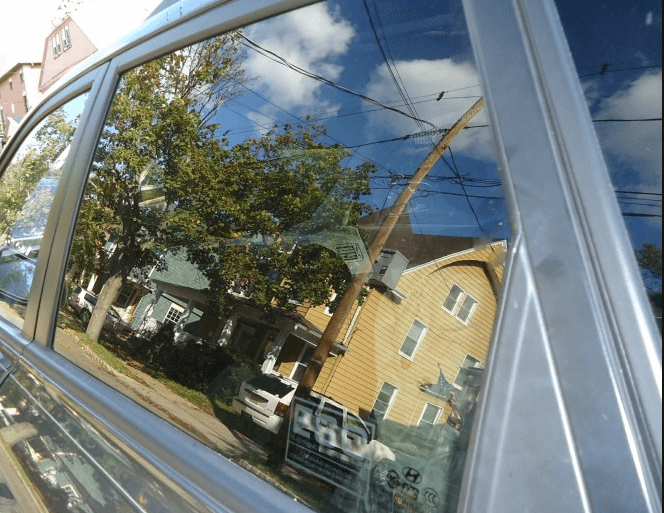The enigmatic laws revolving around window tint in Arkansas are a labyrinth of regulations governing the use of film on motor vehicle windows. These guidelines, woven into existence and upheld by the state’s department of motor vehicles, set an intricate standard for how intense or reflective one can make their car tints. This delicate equilibrium is struck to facilitate both individuality among Arkansan motorists and ensure road safety.
Such laws differ considerably across states like shards in a kaleidoscope; thus grasping the subtleties of Arkansas’ window tint law becomes paramount for adherence. The cryptic edicts cover diverse aspects including – but not limited to – measurable light penetration through the tint (Visible Light Transmission percentage), permissible levels of reflection from the tints, approved color spectrums for tints, and rules surrounding specific panes such as windshields. They also envelop provisions accommodating those who might require departures from these guidelines due to medically documented conditions shrouded within their personal health narratives.
Legal Limitations for Light Transmission
Within the confines of Arkansas, there exists a precise specificity regarding the regulations pertinent to vehicle window tinting. The legalities are painstakingly vigilant towards light transmission details, decreeing the permissible percentile of luminosity that’s lawfully acceptable to seep through the car’s tinted glass. One recurring query often tossed up is, “Is 20 tint within lawful bounds in Arkansas?”
To properly respond to this question, one must delve into understanding that Arkansan law mandates at least 25% light transmission. This implies a severe degree of tint such as 20 – signifying merely 20% light passage – would be deemed illegal due its diminished level of light permeability. Consequently, according to these rules and regulations instated by authorities, an emphatic negative response awaits those wondering if “Is 20 tint legal in Arkansas?”
The Importance of Visible Light Transmission Percentage
The concept of Visible Light Transmission (VLT) percentage, with its significant influence on window tinting laws, is particularly pivotal in states like Arkansas that uphold specific regulations concerning this intricate matter. VLT encompasses the quantity of light within the visible part of the spectrum that manages to traverse a window film or any comparable medium. The VLT percentage fundamentally shapes how darkly-hued the tint appears and measures the degree of light penetration through it. To illustrate, a tint with a 35% VLT permits approximately 35% of visible light to permeate through; thus rendering it markedly darker than films possessing higher VLT percentages.
In Arkansas’s context, vehicle proprietors frequently find themselves obligated to maintain an established VLT percentage so as not to overstep legal boundaries. Besides keeping you aligned with legal requirements, an appropriate VLT percentage also guarantees safe vehicular navigation by permitting just enough light infiltration via car windows – granting clear visibility of both road conditions and surrounding areas. On occasions where lower-than-standard VLT percentages are necessitated due to health concerns, provisions exist within state law for such cases: an Arkansas-specific window tint exemption form can be filled out and submitted for validation—upon approval—the use tints exhibiting lesser-than-usual VTL percentages.
Criteria for Tint Reflection in Arkansas

Unraveling the intricate provisions that dictate the reflectivity of automotive window shading in Arkansas’ domain is a crucial cornerstone to attaining consummate conformity. Broadly, these governing rules are dedicated to arbitrating possible visual hindrances stemming from unsuitable window shading, thereby abating vehicular incidents linked to compromised sightlines. Thus, it becomes incumbent upon every Arkansan driver to gain an intimate understanding of these regulations and their effects.
Arkansas’ motor vehicle legislation framework paints improper window tint as a phenomenon marked by an overabundance of reflectivity. However, the state does grant permission for a certain degree of reflection on rear and front-side windows – striking balance between the allure of shaded windows and safety requisites. Hence, gaining insight into and strictly adhering to standards set forth by state regulatory entities can notably curtail potential mishaps and legal ramifications tied with inappropriate window tint.
Non-reflective Tint Laws for Front Windshields
In Arkansas, the governance surrounding window tinting—particularly non-reflective tints applied to front windshields—is both rigorous and explicitly laid out by those in authority. The establishment of these laws aims at ensuring that the implementation of window tinting doesn’t detrimentally affect vehicular safety through hindering a driver’s clear view of the path ahead.
According to these precise rules on window tinting within Arkansas, it’s only acceptable for non-reflective tint to be affixed on the uppermost five inches of a vehicle’s frontal windshield. This particular stipulation serves two purposes: maintaining an unobstructed line-of-sight for drivers while simultaneously providing some protection against harsh sunlight. Conversely, any application of such tints beneath this specified section upon the windshield is deemed unlawful and could result in substantial fines or penalties. Hence, compliance with these regulations is critical for motor vehicle owners residing within Arkansas—not just to remain lawful but also to ensure safety remains paramount.
The Role of Tint Colors in Legal Compliance
Arkansas law, in relation to window tinting regulations, probes not merely into the darkness of the tint but also its coloration. A crucial element for legal adherence is this focus on tint hues. Window tints in the marketplace span a broad spectrum of colors from basic blacks and grays to more unique shades such as yellow and blue. Yet, within Arkansas, all colors except amber and silver are sanctioned legally – an indication of specific color restrictions that punctuate their exhaustive rules.
It is essential to highlight that under certain circumstances, Arkansas allows for exemptions regarding window tints. Such leniency primarily caters to medical scenarios pointing towards flexibility in their regulations. For instance, darker shades might be deemed permissible legally if it aids someone needing extra defense against light due to health issues. Therefore, legality surrounding window tinting in Arkansas does not solely account for light transmission or reflectivity but takes into account both color choices and potential medical exceptions.
Such detailed specifications aim at striking a balance between ensuring safety and comfort of occupants while also satisfying enforcement officers’ need for unobstructed visibility inside vehicles.
- Arkansas law, in relation to window tinting regulations, probes not merely into the darkness of the tint but also its coloration. A crucial element for legal adherence is this focus on tint hues.
- Window tints in the marketplace span a broad spectrum of colors from basic blacks and grays to more unique shades such as yellow and blue. Yet, within Arkansas, all colors except amber and silver are sanctioned legally – an indication of specific color restrictions that punctuate their exhaustive rules.
- It is essential to highlight that under certain circumstances, Arkansas allows for exemptions regarding window tints. Such leniency primarily caters to medical scenarios pointing towards flexibility in their regulations.
- For instance, darker shades might be deemed permissible legally if it aids someone needing extra defense against light due to health issues. Therefore, legality surrounding window tinting in Arkansas does not solely account for light transmission or reflectivity but takes into account both color choices and potential medical exceptions.
- Such detailed specifications aim at striking a balance between ensuring safety and comfort of occupants while also satisfying enforcement officers’ need for unobstructed visibility inside vehicles.
Moving forward with these points:
- The role of tint colors extends beyond aesthetic appeal; they play a significant part in determining whether or not a vehicle complies with state laws.
- Different states may have varying regulations when it comes to acceptable tint colors; hence individuals should familiarize themselves with local laws before making any changes.
- Exemptions exist allowing certain individuals (such as those suffering from photosensitivity) additional leeway regarding permitted levels of darkness or specific color usage.
- Law enforcement officers require clear visibility into vehicles’ interiors; thus laws often mandate lighter tints on front windows compared to rear ones – another factor influencing permissible shade choices.
- In conclusion: understanding how different aspects like hue selection can impact legal compliance helps car owners make informed decisions about window tints while avoiding potential penalties.
How Medical Exemptions Affect Tint Laws in Arkansas
In the realm of extant tinting statutes in the state of Arkansas, one query oftentimes surfaces: ‘Is a 15 percent window tint permitted by law?’ Under ordinary parameters, Arkansas legislation stipulates that front and back side windows, along with windshields, must admit light to the tune of 25 percent. Therefore, a 15 percent tint would fall short of these legal benchmarks.
However, under certain medically-justified circumstances exceptions are made to this rule.
Specifically in Arkansas’s context, medical exemptions open up paths for individuals afflicted by particular disorders – such as those sensitive to ultraviolet light – to enhance their vehicles with more intense window tints than what is conventionally permissible by law. This implies that under aforementioned conditions a tint boasting Visible Light Transmission (VLT) as meager as 15 percent could conceivably be deemed legitimate within the bounds of legality.
Yet it is key for those seeking to leverage these allowances that they secure suitable certification from an accredited physician affirming the medical need for intensified tints. Not being able to provide valid proof during an inspection or traffic stop can potentially result in fines and legal consequences.
FAQs
The directives for automobile window obscuring in Arkansas are influenced by an array of elements, embracing the proportion of light passage, quantity of tint reflection, hue of the obscurity and existence or absence of a medical dispensation.
For Arkansan vehicles, the permissible range for luminous transmission via vehicular glass tints fluctuates contingent on the aperture. For instance, windshields along with front lateral windows mandate over 25% luminosity transmittance while rearward side portals plus back windows demand more than 10% radiance transmission.
The discernible radiance diffusion ratio bears weight because it dictates how much luminosity is permitted through a glass dye. This impacts visual precision and protection especially during nocturnal navigation. Legal boundaries for brightness transference ensure that shaded glass doesn’t jeopardize roadway safety.
In Arkansas’ jurisdiction, an auto’s panes should not mirror any more than a standard casement would. This safeguards against distracting and potentially hazardous glare which can impact other motorists adversely.
Aye indeed! Within the confines of Arkansan law; non-reflective veneer is permissible across up to five inches from windshield top or above manufacturer’s AS-1 line which could be lower depending on initial design specifications
Certainly! Within our Natural State; regulations forbid utilization of red hues, amber tones and blue shades given their typical association with emergency response units.
Indeed, within Arkansan jurisdiction, individuals with particular health conditions might be exempted from regular tint directives. These ailments must necessitate safeguard against direct sunrays or intense artificial illumination, and a doctor’s endorsement is mandatory for this exemption. Nevertheless, vehicles enjoying this dispensation should bear an identifying sticker on their windshields.
Any individual grappling with an ailment that causes them to need additional sunlight protection or defense against bright synthetic light can lodge an application for a medical reprieve for window shadowing in our state of Arkansas; provided they have backing from a licensed healthcare practitioner.



